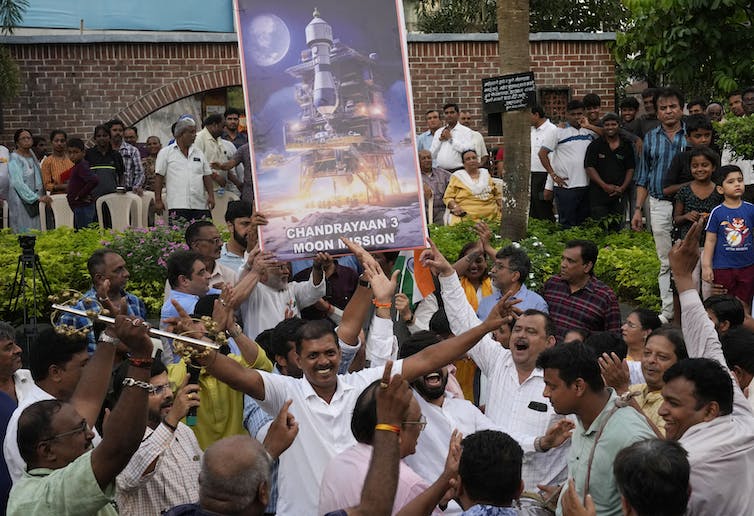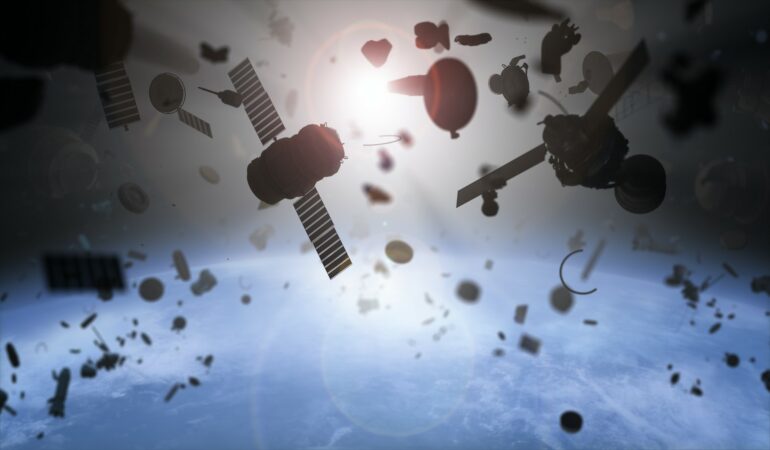There’s a lot of trash on the Moon right now – including nearly 100 bags of human waste – and with countries around the globe traveling to the Moon, there’s going to be a lot more, both on the lunar surface and in Earth’s orbit.
In August 2023, Russia’s Luna-25 probe crashed into the Moon’s surface, while India’s Chandrayann-3 mission successfully landed in the southern polar region, making India the fourth country to land on the Moon.

India’s Chandrayaan-3 lander successfully touched down on the south pole of the Moon, sparking celebrations across the country.
AP Photo/Rajanish Kakade
With more countries landing on the Moon, people back on Earth will have to think about what happens to all the landers, waste and miscellaneous debris left on the lunar surface and in orbit.
I’m a professor of astronomy who has written a book about the future of space travel, articles about our future off-Earth, conflict in space, space congestion and the ethics of space exploration. Like many other space experts, I’m concerned about the lack of governance around space debris.
Space is getting crowded
People think of space as vast and empty, but the near-Earth environment is starting to get crowded. As many as 100 lunar missions are planned over the next decade by governments and private companies like SpaceX and Blue Origin.
Near-Earth orbit is even more congested than the space between Earth and the Moon. It’s from 100 to 500 miles straight up, compared with 240,000 miles to the Moon. Currently there are nearly 7,700 satellites within a few hundred miles of the Earth. That number could grow to several hundred thousand by 2027. Many of these satellites will be used to deliver internet to developing countries or to monitor agriculture and climate on Earth. Companies like SpaceX have dramatically lowered launch costs, driving this wave of activity.
“It’s going to be like an interstate highway, at rush hour in a snowstorm, with everyone driving much too fast,” space launch expert Johnathan McDowell told Space.com.
The problem of space junk
All this activity creates hazards and debris. Humans have left a lot of junk on the Moon, including spacecraft remains like rocket boosters from over 50 crashed landings, nearly 100 bags of human waste and miscellaneous objects like a feather, golf balls and boots. It adds up to around 200 tons of our trash.
Since no one owns the Moon, no one is responsible for keeping it clean and tidy.
The clutter in Earth’s orbit includes defunct spacecraft, spent rocket boosters and items discarded by astronauts such as a glove, a wrench and a toothbrush. It also includes tiny pieces of debris like paint flecks.
There are around 23,000 objects larger than 10 cm (4 inches) and about 100 million pieces of debris larger than 1 mm (0.04 inches). Tiny pieces of junk might not seem like a big issue, but that debris is moving at 15,000 mph (24,140 kph), 10…
